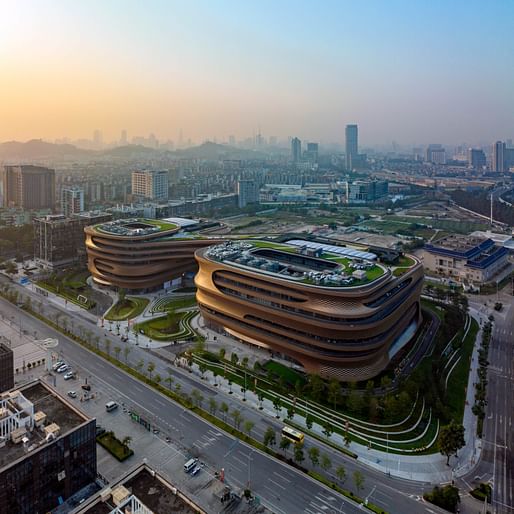
Zaha Hadid Architects has offered The New York Times an insight into how the firm has deployed artificial intelligence in workplace design. Times writer Farah Nayeri spoke with Arjun Kaicker and Ulrich Blum from Zaha Hadid Analytics + Insights (ZHAI) which uses data and artificial intelligence to design workplaces.
“The pandemic has really supercharged innovation in the workplace,” Kaicker told the paper, noting that before 2020, “the majority of office buildings had a one-size-fits-all desk for everyone, and the same environment around them, the same everything.”

Blum shared that ZHAI possessed a computer tool that, within 27 hours, could generate 100,000 designs for a building interior — a feat which would take an architect a decade to deliver if producing 40 drawings per day. The team cited the firm’s Infinitus Plaza in Guangzhou, China, which saw AI deployed to generate options for positioning the building’s core.
The piece also detailed the methods through which data can be collected to inform AI-driven workplace design. “Sensors track people and environmental conditions — temperature, air quality, noise levels, humidity, carbon dioxide levels, and daylight,” The Times explained. “Architects and workplace designers then cross-reference that data to get a better picture of actual needs.”

While noting that such data is compiled and harvested anonymously, the piece also identified the concern that “there’s a supervisor inside your machine” capable of breaching employee privacy and using such data against them.
Reflecting on the potential for AI to aid the evolution of workplace design, ZHA principal Patrik Schumacher also warned of the dangers of AI tracking systems to undermine worker privacy.
“Firms have to be responsible,” Schumacher told The Times. “We need to be sure that, when these systems are used in offices to draw conclusions and improve matters, they’re not a kind of alien control system where we’ve been tracking individuals to penalize them.”
This article is part of the Archinect In-Depth: Artificial Intelligence series.
4 Comments
A puff piece no doubt. I found it ironic that they decided to emphasize the sheer volume that their greybox AI can churn out, rather than the quality of optimization.
Which leads to the question how long it would take them to review 100k designs. But of course they said it could generate them: there is this potential. Many variations have to be slight to negligible. And I suppose AI could narrow down the choices. Still you have to wonder if such AI won't lead to a data glut.
Yeah, I thought they'd talk more about how they've trained models to pick the most optimized design of the 100K iterations given everchanging constraints. That'd be a lot more valuable.
the nyt's architectural discourse is incredibly narrow and elitist.
Block this user
Are you sure you want to block this user and hide all related comments throughout the site?
Archinect
This is your first comment on Archinect. Your comment will be visible once approved.